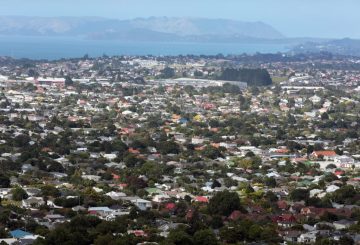웰링턴 시의회는 비용이 크게 증가하자 곧 타운홀 프로젝트의 다음 단계를 결정할 예정이다.이 프로젝트를 인근 시청 건물의 재개발과 결합하는 방안을 검토 중입니다.이렇게 하면 일부 비용을 절약할 수 있지만 시청의 재개장을 지연시킬 수도 있습니다.
120년 된 전통 건물인 시청은 지진 위험 때문에 2013년부터 문을 닫았습니다.2019년 예상 보수 비용은 3천 2백만 달러에서 1억 4천5백만 달러로 증가했습니다.작년에는 팬데믹 관련 건설 비용으로 인해 예산이 3천 7백만 달러 추가로 증가했습니다.현재 총 예상 비용은 2억 6,400만 달러 이상으로 계획보다 8,180만 달러 더 높습니다.
의회의 최고 운영 책임자인 제임스 로버츠 (James Roberts) 는 비용 내역을 다음과 같이 발표했습니다.
- 2023/4:14만 달러
- 2024/5:5천만 달러
- 2025/6:48만 달러
- 2026/7:3천만 달러
- 2027/8:5백만 달러
Roberts는 시청 건물의 민간 개발을 허용하여 최대 6,490만 달러를 절약하는 것이 최선의 방법이라고 말했습니다.하지만 이로 인해 시청의 재개장이 연기될 수 있습니다.프로젝트가 중단되면 시의회는 결과 없이 2억 4천만 달러를 지출하여 평판에 해를 끼칠 수 있습니다.
건물을 철거하려면 2억 4천3백만 달러가 넘는 비용이 들며 문화유산 지위 때문에 법적 조치가 필요합니다.추가 자금 확보에는 불확실성이 따르며, 지연될 경우 비용이 증가할 수 있습니다.
시의회 CEO 바버라 맥케로우 (Barbara McKerrow) 는 시의회의 명성과 뉴질랜드 심포니 오케스트라와 같은 기관과의 파트너십에 해를 끼칠 수 있다는 점을 강조하면서 지연을 막았다.
시청에 대한 결정은 다음 주에 내려질 것으로 예상됩니다.공연장이 문을 닫으면 다른 공연장인 마이클 파울러 센터 (Michael Fowler Centre) 도 업그레이드가 필요하기 때문에 이 도시에는 수년 동안 콘서트 장소가 부족해질 것입니다
.





























































